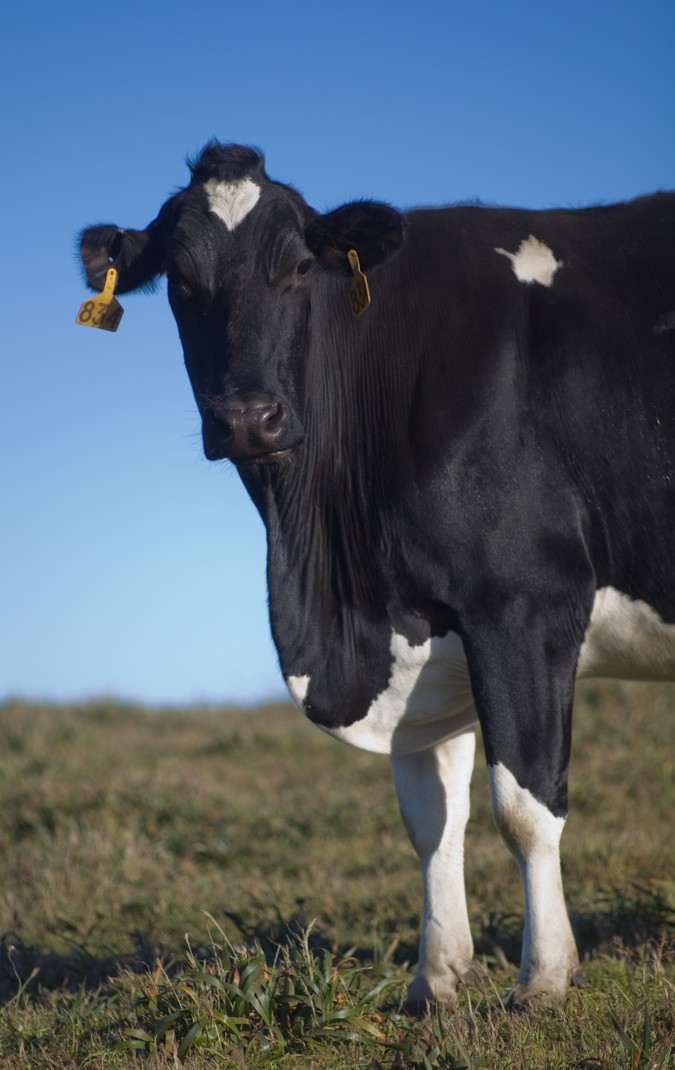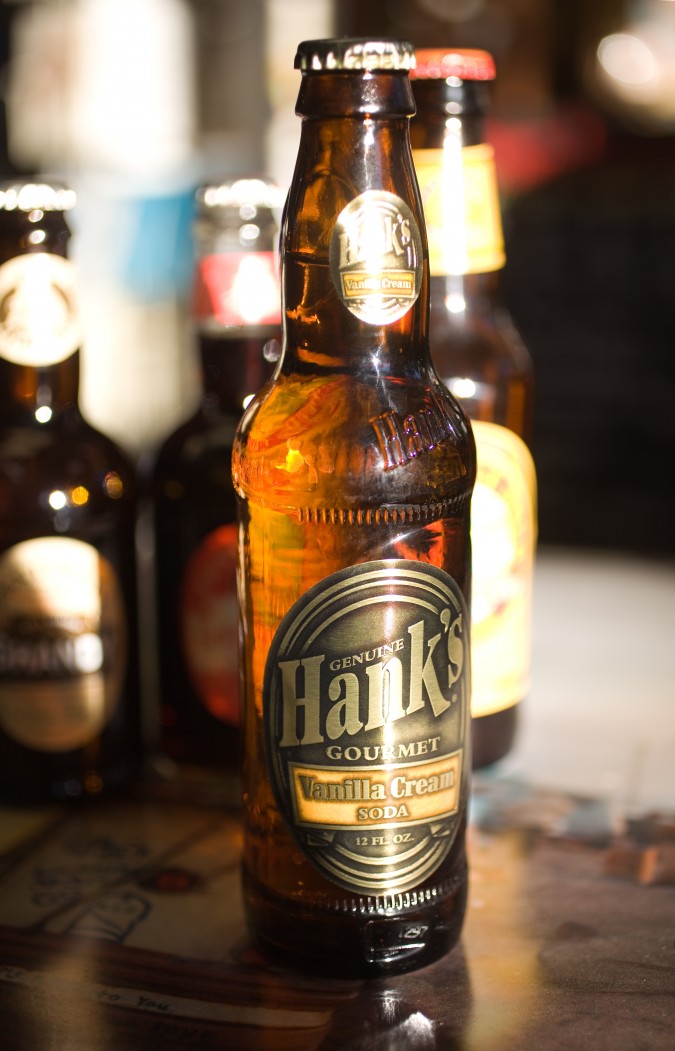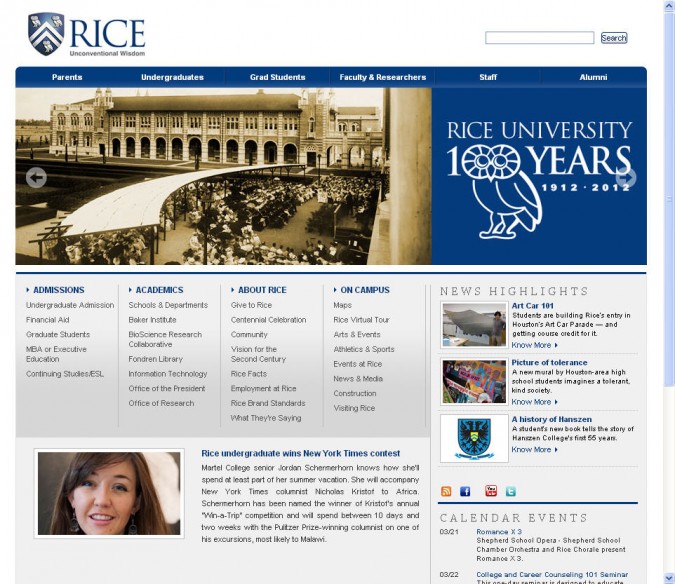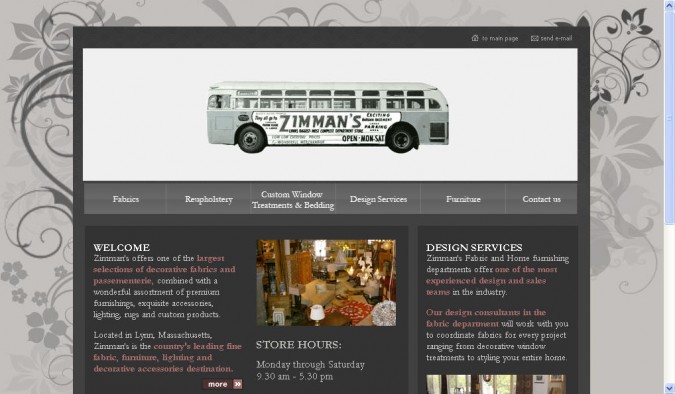Archive for the ‘Bus conversions’ Category
I finally visit Point Reyes, California USA
Yesterday, June 10, 2012 I took a drive to Point Reyes National Seashore, California USA from my home in San Francisco. Even though I moved to San Francisco from Chicago, Illinois after 9th grade in high school, I had never been to Point Reyes before. It’s not far from San Francisco, so I feel silly for waiting so long.
Sadly, I arrived at 5pm, but the walkway to the famous Point Reyes lighthouse closes at 4:30pm, so I didn’t get to touch the lighthouse. I did get to stand on the very windy peak above the lighthouse to take the photograph above. I estimate the wind was a constant 40 miles per hour while I was up there. According the the sign, winds have exceeded 100 miles per hour up there.
The lighthouse is not at the peak height because that would place it in the fog more frequently. The lower perch makes it more visible to passing boats and ships.
Amazingly, there are cattle ranches at Point Reyes, and the cattle at one ranch are not separated from the road by fences or even space. I was able to park and take this picture of a female cow.
Her name is 834.
I used the same Canon 135mm lens I use when I photograph female people. I asked my subject if she had any more flattering ear rings to wear other than the gaudy yellow pair she’s sporting here, but she ignored my remarks. I took dozens of pictures, just like I do on a photo shoot.
I drove home on California State Route 1, which for the most part follows the coast of California and is thus very twisty and is demanding of drivers. Just after the sun went down I took the shot above. The sun isn’t directly showing in this shot, which I enhanced in Adobe Photoshop to make it more dramatic. I don’t often photograph sunsets, but this one just presented itself.

Exotic gourmet sodas for sale at The Inverness Store deli and grocery store in Inverness, California, June 10, 2012
Before I went to the lighthouse, I stopped at a charming grocery store and delicatessen in Inverness, California named simply The Inverness Store. This store is simple, but it is a treasure on the inside because it houses the most diverse collection of gourmet soda pop that I have ever seen in person. The photograph above shows about half of the selection offered, but this photograph shows dozens of flavors, such as Rhubarb soda and Huckleberry soda. I had one of each, and they were delicious. I don’t drink much soda anymore — only a few per week at the most. But when I do drink soda, I love these artisan products, which I have written about before on this blog.
In keeping with my new persona as a blogger, I introduced myself to the wife and husband team that own The Inverness Store — Nav and Raj Singh. I was so charmed with the soda selection that I came back around 7pm and asked if I could take some photographs. I asked if I could set up a still life, and Raj said that I may. I set up in the evening sunlight on a table just inside the front door. The low angle of the sun in the shot above bounced off the yellow label of the bottle on the right and penetrated the brown bottle of Hank’s Gourmet Vanilla Cream Soda in front, setting its contents aglow. The still life is arranged on a poster of a vintage school bus conversion from the 1960s, which the store had on sale for just USD $5.00 each. Since I love buses, this setting just felt right.
After I completed my photographs, I chose a bottle of Huckleberry soda to drink on my drive home, and when I went to pay for it, Nav gave it to me. That’s the first gift I’ve received as a blogger, and it made my day. Thank you Nav and Raj!
As usual, I uploaded these pictures at full resolution. Click on the pictures to see the full size versions, which are larger than your screen, even if you have a new Apple MacBook Pro with a Retina super high resolution display (over five million pixels), which was announced to the world today in San Francisco at the Apple Worldwide Developers Conference. I upload my pictures at 21 million pixel resolution.
Jordan Schermerhorn wins New York Times trip to Africa with columnist and blogger Nicholas Kristof
Here’s a great essay by undergraduate Rice University student Jordan Schermerhorn.
Schermerhorn wrote this engaging piece to try win a trip with New York Times newspaper columnist Nicholas Kristof.
I follow Kristof on Facebook, and that’s how I found Schermerhorn’s essay.
I am reprinting Schermerhorn’s essay in its entirety here because I don’t think she will object, given she wrote this knowing it could receive widespread public attention. Furthermore, this is not New York Times text, but Schermerhorn’s personal text. Of course I’ll remove this text if asked by Schermerhorn or The New York Times.
As you can see above, Rice University devoted prime space on the front of their website telling the world of Schermerhorn’s win.
According to the Rice story about Schermerhorn’s win, she will travel with Kristof to Africa and will blog for The New York Times during her trip. How exciting! I am really happy for her.
What Scermerhorn has written is inspiring and powerful. She’s a good writer. I predict she will do great things in life. Her heart is in the right place.
I identify strongly with what Schermerhorn has written.
I plan to tour the US and world in my super green 4 cylinder bus conversion to advance the idea that we can tread far more lightly on the planet with existing technologies if we would only change our perspective on what it means to be happy. I am exchanging heaps of easy cash I could make by writing code for established companies to pursue my desire to help save the world. I can get by just fine on the more modest cash I make working for myself and managing my investments. I can do this and write at the same time.
Scermerhorn says she wants to help her fellow classmates pursue their desires to change the world. She plans to help them by writing. She plans to show them how to avoid going to work for oil companies and consulting firms. She’s already on her way by winning this New York Times prize. Congratulations Jordan!
By Jordan Schermerhorn
Text appeared in The New York Times March 15, 2012
I remember, as most people probably do, the instant I realized the world was bigger than my hometown.
It’s all the fault of a high school science teacher. After having rarely left San Antonio, I ventured few horizon-shattering hours out to West Texas for an academic competition my senior year. The long roads and desert panoramas struck something in me, and I decided that it would be a good idea – or, at the very least, a good story – to repeat the adventure alone. A few weeks before leaving for university, with recklessness that only an eighteen year-old can manage, I took an early-morning drive out to Big Bend National Park, across from the Mexican border.
Wading knee-deep in the banks of the Rio Grande, I could see the village of Boquillas on the other side. The border within the park – formerly open to all travelers who dared to chance a makeshift gondola – closed after 9/11, and the town’s decay from lack of tourist revenue was evident even from such a distance. Cardboard with chicken-scratch Spanglish scattered the ground in strategic locations near signposts, beckoning those passing by to examine decorative walking sticks and tiny creatures of the desert sculpted from wire. “Please take,” they read. “Suggested donation $5.”
As I slept in my car that night, I couldn’t shake the feeling that I wasn’t doing enough: putting a few dollars under a rock was a way I could help, but it wasn’t the way for me to help. Leaving the next day I noticed my money was gone, and the wire scorpions had been replenished.
I arrived at Rice University shortly thereafter by the grace of a scholarship, hesitant but motivated, and eager to explore further. New friends from Indonesia and Pakistan threw me for a loop from which I’m still recovering. I chose to study bioengineering, a vague term that shifts in definition from institution to institution, but my passion for the past three years has been my minor: global health technologies.
I had been looking for years for a way to marry my feuding passions of science and policy, of writing and action. I feel extraordinarily lucky to have found a field that combines all of these things seamlessly: to participate in both diagnostic research and Model Arab League, and to grasp at the common ground between the two. For the past four months, I’ve been hard at work developing a low-cost monitoring system for apnea in premature infants. It’s rewarding – I’m not an electrical engineer, and I by no means knew how to program this time last year, but I’ve managed to help build a tool that can save lives. This kind of tinkering isn’t too complex, and it’s not out of reach.
But I still feel limited. I see my fellow students invest thousands of hours in capstone projects that can provide real and immediate help to those in need, only to abandon them in favor of more traditional pursuits after walking the stage. Medical school, graduate school, “real jobs” with oil companies and consulting firms: these are where many of my peers end up, and I don’t blame them. I know several who wish it were easier and less risky to drive forward with their makeshift syringe pumps, their diagnostic smartphone applications. They just don’t know how.
I’m looking for a way to communicate the potential for these ventures. I’d love to help demonstrate to students and budding entrepreneurs that there IS a vast set of untapped opportunities here to build, create, and implement solutions to complicated problems in the developing world. And I could help reach a nontraditional audience whose potential to improve lives remains largely untapped.
Engineers can’t write? It’s a classic stereotype, and one I hope I defy. I contribute articles for two student publications; I blog and tweet rampantly, receiving ironic in-person compliments on my Facebook posts. I love making things – but I love talking about them more, and getting people excited about making progress in global health.
Standing near the border four years ago is still the closest I’ve been to leaving the U.S. I’d like to cross it, this time, and use writing to bring others with me.
How to date a hippy chick

Hippie guitarists 2010 sidewalk chalk Flood Grand Rapids June 13, 2010. Photo by Flickr user stevendepolo. Commercial use permitted.
How to date a hippy chick is a funny blog post I discovered the other day when I was trying to figure out how I am going to get a group of people together to go on a road trip with me in my bus conversion.
I hope to travel around California for a month or longer this year, and I definitely do not want to go on the road alone. I did that when I drove my bus conversion to New York City, New York from San Francisco, California in 2002. My girlfriend at the time, Marisha Pecci, couldn’t go with me because she was working full time. Even though I had an Internet connection, via satellite, on my bus conversion, life on the road alone was lonely and boring.
I am 100% certain that I can find 2 or 3 people to go with me, provided I am open to traveling with people outside my normal circle of friends.
I am 100% open to broadening my circle of friends. I have made so many new friends simply by renting out my extra bedrooms in my four bedroom San Francisco house.
When I think about the kind of person that can just take off for a month and might want to live in a bus, my mind drifted over to Haight Street and its hippies.
The hippies I see lounging on Haight Street, which is walking distance from my house, appear to have time for such trips, and they are likely to think my bus conversion is the coolest thing they’ve ever seen with wheels.
There will be four bunk beds and the master bedroom with a full size bed for me, so technically I have room for six including myself if I can find a girlfriend in time. I’m not sure that six is the right number though, as the water supply will run out in mere days with that many people taking showers. But water may be found at every Flying J fuel station, for free, so I am not going to reduce the number if I identify five compatible souls.
It will be an adventure to remember.
The Green Tortoise adventure travel company I believe packs dozens of people on board their buses, and there are many more bunks on their vehicles. Having six people on a 40 foot bus would viewed as the height of luxury by Green Tortoise customers.
If you read Tyler O’Donnnell’s How to date a hippy chick post, you’ll see O’Donnell specifically requires that one own a bus! So I am already part way there should I decide to date a hippy chick. Yes, I probably come across as a serious business person on this blog, but I have more in common with hippies in general than you might guess. I used to be a punk rocker when I was younger, and that experience was formative.
O’Donnell first point from his presumably somewhat tongue-in-cheek blog post:
“Become an artist. No hippy chick is going to get with you if you are a “conformist” suit with a job that involves numbers. Hippies hate numbers! From what I can tell, hippy girls thrive on things that appear unique. I would recommend getting your brain into one or all of the following artistic mediums: drawing, painting, feces smearing, writing or photography.
Other things to keep in mind?
Educate yourself on festivals like burning man and make your own clothes. You might also want to consider gaging your ears. Numerous studies show fornication rates go up drastically after getting this upgrade. It is also a good idea to get tight jeans and then cut them off at the knees…. keep in mind that although you may feel ridiculous, it is imperative to hold yourself with an aura of prestige and superiority. Even if you really aren’t better than anyone else, you must deep down believe you are. This attitude will fuel long conversations with hippy girls about how ignorant everyone else is.”
I am a current fan of the tiny house movement, which I suspect lots of hippies identify with since a central course of action in the tiny house movement is to live in smaller homes to avoid the all consuming work needed to support life in a large McMansion style house.
In essence, I already live in a tiny house since I share my 2,000 square foot home with five other people. That’s just 333 square feet per person.
Life is good.
Zimman’s sells sumptuous fabrics at fair prices

Fabric for sale at Zimman's of Lynn, Massachusetts, USA. Picture from http://nshoremag.com/zimmans-of-lynn/
The last time I worked for others, I worked for Jeff Zimman, Susan Philpot and Hank Barry.
I was at Cooley, LLP, a powerhouse law firm in Silicon Valley.
Zimman chaired the Document Automation Committee at Cooley, the entity to which I reported in my role as Computer Aided Lawyering Project Leader.
Jeff Zimman is currently the Chair of Posit Science, Inc., which produces software to help build and maintain cognitive function. Listeners to KQED public radio in the San Francisco Bay Area, where I live, are familiar with Posit Science because this software is always one of the gifts one may select if one becomes a financial sponsor of that radio station. I love KQED, by the way, and I listen to it almost every day. You may sponsor KQED online at this link.
Even though I have known Zimman for a majority of my professional life, I know little about him as a person. I know the basics – that he’s married to architect Ken Ruebush, the brother of my friend Susan Ruebush. I know Jeff Zimman used to be an investment banker at Lazard before co-founding Posit Science. I know Jeff Zimman used to be a newspaper reporter before he went to law school.
Thanks to Facebook, a currently well known social networking website based in Silicon Valley, I now know something new about Jeff Zimman.
Jeff Zimman’s grandfather Morris Zimman 103 years ago founded a treasure of a retail store named Zimman’s. This store is so lush, sumptuous and glorious that articles have been written about it. Gushing articles so colorful that they make one want to make a special trip to Zimman’s just wander the isles and touch the products.
What does Zimman’s sell? Here’s how their website explains it:
“Zimman’s offers one of the largest selections of decorative fabrics and passementerie, combined with a wonderful assortment of premium furnishings, exquisite accessories, lighting, rugs and custom products.
Located in Lynn, Massachusetts, Zimman’s is the country’s leading fine fabric, furniture, lighting and decorative accessories destination.”
Before today, I had never heard the word passementerie. This is what WikipediA has to say initially about passementerie:
“Passementerie or passementarie is the art of making elaborate trimmings or edgings (in French, passements) of applied braid, gold or silver cord, embroidery, colored silk, or beads for clothing or furnishings.
Styles of passementerie include the tassel, fringes (applied, as opposed to integral), ornamental cords, galloons, pompons, rosettes, and gimps as other forms. Tassels, pompons, and rosettes are point ornaments, and the others are linear ornaments.”
Zimman’s sells fabric.
Perhaps the nicest fabric I have ever seen — have a look at the photograph above.
The only store I can compare it to in the Bay Area is Britex Fabrics. But Britex is a premium priced emporium located in costly Union Square retail space. Prices at Britex are sky high such that it’s a turnoff to even browse.
Zimman’s by choice is located next to a 99-cent discount store, so their rent is affordable. The savings are passed on to customers, which results in Zimman’s being both affordable and magical at the same time.
It’s as if Neiman Marcus moved into a Costco and reused the same shelving to sells its luxury goods. Prices could drop dramatically if they didn’t have to support the exceptionally luxurious stores that they’re famous for.
Here’s what Michael Zimman, Jeff Zimman’s brother, has to say about the store he now rus:
“It’s an unlikely spot for this type of business to evolve,” agrees owner Michael Zimman, grandson of the store’s founder, Morris Zimman. “But it works for us. You need a lot of space, which we have, and we’ve been doing it for 103 years, so we’ve developed a broad reputation.”
“With arguably the largest selection of textiles on the East Coast, if not in the country, and a carefully curated array of furniture and decorative items, Zimman’s has become a destination business, surviving the changing landscape of retail by smart specialization and unbeatable prices.
Stepping into Zimman’s can be a daunting proposition. With about 40,000 square feet—nearly an acre—of shopping spread over three floors, some customers, especially those seeking textiles, may not know where to start. After all, Zimman’s has at least 25,000 bolts of fabric in house—but who’s counting? “It might be 50,000. It might be 100,000. We don’t stop to count,” Michael Zimman says. “But that’s part of what makes us unique. We’re for people who want to step back into the way things were and have an experience of shopping in an emporium, putting their hands on textiles and furniture… It’s a throwback, and people really love it.””
I do wonder after reading Coffey’s article if Jeff Zimman also spent a lot of time at Zimman’s while he was growing up, like his brother Michael did. Coffey writes:
“Zimman’s dedication to the old ways has deep roots; Michael learned the business at his grandfather Morris Zimman’s knee. Morris opened the store in 1909, and Michael says he cannot remember a time when he wasn’t involved in the business. In fact, if he wanted to see his father, who worked from 10 a.m. until 10 p.m. six days a week, he had to go to the store. While in the second grade, Michael would take the bus from the family’s home in Marblehead to swim at the Boys’ Club on Lynn Commons. After swimming, Zimman would wend his way through back alleys and residential neighborhoods in the waning afternoon light to get to his father’s store for a ride home.”
It is highly unusual for a lawyer to found a company. Jeff Zimman is certainly an entrepreneur. Posit Science is not an easy kind of company to start. They raised tens of millions of dollars in venture capital. They have world renowned scientists like Michael M. Merzenich, PhD on the team (see Merzenich’s extensive WikiPediA entry here). What Jeff Zimman has accomplished makes my head spin compared to what I have done in the software field.
I suspect that it is extremely likely that Jeff Zimman was profoundly influenced by his grandfather Morris Zimman, the founder of Zimman’s. Watching his grandfather build and operate a successful business had to help inspire him to leave the relative tranquility of lawyering and banking to become a startup founder. I run into Zimman only about yearly, but I will ask him about this connection the next time I see him.
Finally, a fun fact near to my heart — Zimman’s used to advertise on the sides of city transit buses. There is an animated graphic that plays as soon as you arrive at the Zimman’s website that shows the bus ‘driving’ from right to left across the top of the website. I was able to capture the bus in a screen shot after a few tries with Snag It screen capture software. Here is the result. As my readers know, I am a huge fan of buses, and I own a bus even larger than the one below, although now it’s a motorhome.
John Fairfax, renowned ocean rower, dies
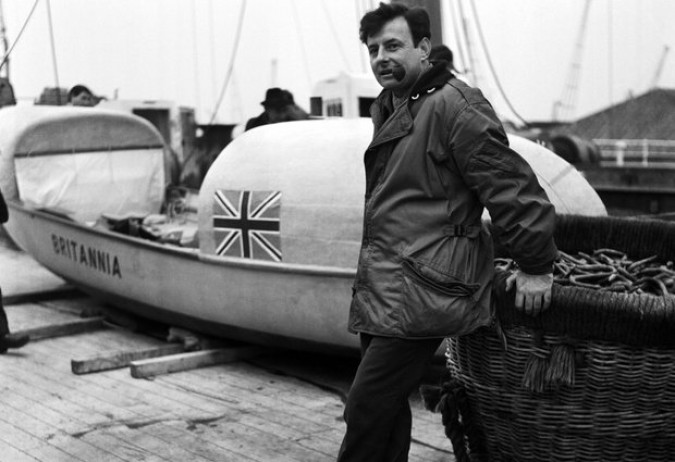
John Fairfax with his Brittania row boat that he crossed the Atlantic Ocean in by himself in 1969. Fairfax was the first known person to accomplish this feat. He died February 8, 2012.
John Fairfax died February 8, 2012. I had never heard of Fairfax until today, when Reddit featured a link to his obituary in The New York Times newspaper entitled John Fairfax rowed across oceans.
Fairfax was the first known person to row a boat by themselves across the Atlantic Ocean. He accomplished this impressive feat in 1969.
In 1971 and 1972 he rowed across the Pacific Ocean with his girlfriend, Sylvia Cook. They became the first known pair to row across that ocean.
The obituary for Fairfax is colorfully written and entertaining. John Fairfax was quite an adventurer according to Brent Lang writing for The Wrap. Lang writes that Hollywood should make a movie about John Fairfax.
I’m impressed Fairfax was able to convince his girlfriend to row across an ocean in a rowboat. That gives me hope that I’ll be able to convince a woman to travel the world with me in my eco bus conversion, like my Facebook friend Herman Zapp is doing in his 1928 automobile.
Dual on demand water heaters for redundancy and extreme efficiency
On my bus conversion I plan to have two propane water heaters. These will be low flow on demand models that can heat up to 1.6 gallons per minute. That’s plenty in a vehicle where water should be carefully conserved.
There are two main styles of on demand water heaters in this low flow category.
The first style is vented to the outside via a chimney, just like most on demand and tank style gas water heaters.
The second style, so called vent free, is not vented to the outside. This means all the combustion gasses stay inside, just like when you use an unvented gas fireplace or a Mr. Heater Buddy space heater.
The vent free propane water heaters cost slightly more than conventional vented on demand water heaters. Presumably the extra expense is to pay for the safety features not found on the vented models. The ventfree water heaters have a low oxygen sensor that will shut off the gas flow if there is insufficient oxygen for proper combustion. Improper combustion can produce more deadly carbon monoxide gas, which can kill you if it builds in concentration.
I am happy to pay more for safety. I already have a carbon monoxide detector on board since I use a Mr. Heater Buddy heater while I continue the build out of the interior. That heater also has a low oxygen sensor like the unvented water heater.
About a week ago I had what I think is a bright idea:
Install both vented and unvented water heaters routinely in all buildings that offer hot water to their users.
The reason this is a good idea is that both types of water heaters transfer only a portion of the heat they produce to the water passing through them. The rest of the heat either goes up the chimney or into the room depending on if the heater is vented or vent free.
When it’s cold enough outside that heat is required indoors, then it would be wise to use the vent free on demand water heater. Part of the heat will heat the water, and all the remaining heat will be deposited into the living quarters with the same 99%+ efficiency as if the gas were burned in an vent free fireplace.
When it’s warm enough outside that air conditioning is required indoors, then it would be wise to use the vented on demand water heater. Part of the heat will heat the water, and most of the rest of the heat will be sent up the chimney and out of the air conditioned space, saving electricity that would otherwise be needed to remove the surplus heat from a vent free water heater.
This could be complicated to set up and control, but not if one does the following small amount of extra work.
Run separate hot water lines from each water heater to the fixtures. Under the counter where the faucet valves are, install a three way valve before the hot water faucet valve.
Buy two faucets, and make sure they are the kind where you drill three holes in the counter top and mount three separate parts into their respective holes. Such faucets are called widespread faucets.
You’ll want two faucets because you will need nice looking matching knobs for my system. You’ll need to modify the second hot water valve and handle so that the part that’s above the counter line is unchanged, but the part that’s below the counter line will be mated to the three way valve I specified above.
This extra knob will control which on demand water heater is used when you turn on the hot water. If you set the three way valve to position A, then the vented water heater will be used and the vent free heater will stay off. If you set the three valve to position B, then the vented water heater will stay off and the vent free heater will be used.
If you need a greater amount of hot water, you could put the three way valve in its middle position, which would cause both water heaters to be used simultaneously.
This proposed system gives built in redundancy in case one heater fails.
Such a system would work for houses and offices as well, with a big benefit for water savings. Vent free water heaters only deliver 1.6 gallons of water per minute, so this would limit how much hot water a user can waste. If users insist on mimicing the flow of a normal tank style water heater, more than one 1.6 gallon per minute vent free water heater could be installed in parallel such that they would all start when the hot water faucet is turned on. That is provided code permits this, of course.
Both styles of water heater are available in propane and natural gas versions, so what I suggest here can be applied to all manner of installations, providing of course that building codes where you are permit such a system. Here’s a natural gas traditionally vented model that at the time of this writing sells for USD $175.99.
I care about such efficiency because I am building my bus conversion to be a model of efficiency. For example, I am installing triple pane windows with steel insulated window shades, for a total of 5 unbroken surfaces separating the indoors from the outside when the shades are drawn at night. I am also installing 8 inches of foam insulation on the roof, for an R rating of almost 60. I am hoping to be able to heat and cool the interior just with solar energy. I will have the propane water heaters on board for use when it’s too cloudy to warm enough water with the rooftop solar hot water collectors I plan to build.
My bus conversion electrical systems are now solar powered
Over the weekend I installed and connected my second solar panel system on my RTS bus conversion. Now the starting batteries will be kept fully charged even if I don’t start the vehicle frequently, which is currently the case since I’m working on it on weekends and never taking trips.
Since I only drive it a block or two at a time, to move it to the other side of the street for street cleaning, the batteries have discharged several times this year. Since buses have 24 volt starting systems, I can’t get a jump start from my car or a regular tow truck.
What I have to do is take out the 4 batteries and take them home, where I charge them individually on a 12 volt charger. This takes about a full day to accomplish, including charging through the night. I have to wake up once to switch the charger to the next battery. This has happened enough times that I finally climbed up on the bus conversion roof and bolted my set of two 12 volt Uni-Solar 20 watt panels and wired them in series to get 24 volts.
I then ran the wires through the roof and down to a 24 volt Xantrex C35 solar charge controller, which was connected through a fuse to the starting battery cut off switch in the dedicated battery bay in front of the rear wheels.
Everything worked perfectly the first time I switched on the batteries.
It’s hard on batteries to let them discharge to the point they won’t start the vehicle. Keeping the batteries fully charged will certainly make the batteries last longer. I don’t understand why all vehicles don’t incorporate small solar panels to keep the battery charged during periods of non use. You can get small battery maintainer systems for around USD $25.00, and if they were built in, I can see the price dropping by half.
Would you pay USD $12.50 more for a car that would not be stranded if you don’t drive it for a few months? The tow truck operators might not like it, but I think it’s a good idea. Excess solar power could be used to drive a tiny fan to keep the passenger compartment cooler. This would result in less petroleum fuel being used to run the air conditioner on high to cool down an interior that might reach 140 degrees F sitting in the hot sun in the summer. Fewer batteries being discarded prematurely plus lower air conditioning costs? Seems like that would be well worth an extra USD $12.50 per vehicle.
Raising a family in a 1928 automobile while driving 145,000 miles on secondary roads
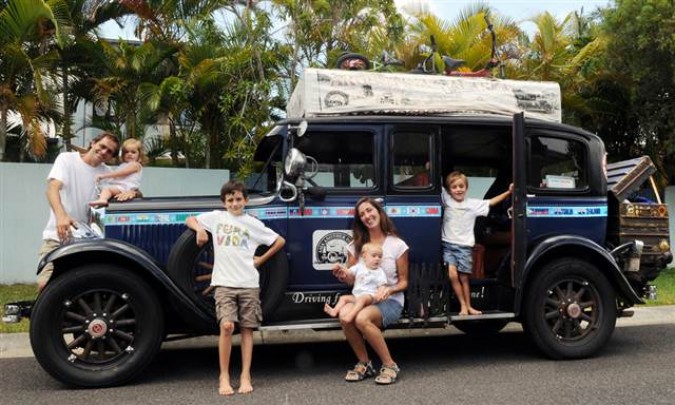
Herman and Candelaria Zapp with their children, from left: Paloma, 3; Pampa, 8; Wallaby, 1; and Tehue, 5.
I have written about my dream of traveling the world in my bus conversion to promote green living. That might seem a contradiction since such a large vehicle uses a lot of fuel to move. But the dwelling part of the vehicle will likely be the most efficient home many people will have ever seen. I think it’s a fair trade off to burn some fuel to spread the word about how little fuel one can use to live day to day.
Even people who travel the world by plane to spread the word about green living burn a lot of fuel to move those planes around the world.
On a per pound basis, my bus conversion is a lot more efficient than a Toyota Prius. I get 11 miles per gallon on the freeway in my conversion, and the vehicle weighs 28,000 pounds. That is outstanding compared to a set of Prius cars that weigh the same.
Today I want to share a story of an inspirational family lead by Cadelaria and Herman Zapp, pictured above with their four children.
This is not the more famous Hermann Zapf, the legendary typeface designer that created the fluid and beautiful Zapfino font script font.
The Zapp family is traveling the world in a 1928 Detroit-made Graham Paige Model 610 automobile. Herman and Cadelaria started their trip 11 years ago before they had children. They had 4 children during their travels, with each child born in a different country. The map above shows almost the first four years of their travels, which started January 25, 2000. That trip was a mere 43,717 miles long.
So far the Zapps have traveled over 145,000 miles, all on secondary roads as their car is not freeway capable since its top speed is just 40 miles per hour.
The family has made thousands of friends along the way. I just sent a Facebook friend request to Herman Zapp, where he already has 4,671 friends.
The Zapp family includes Herman Zapp, Candelaria Zapp, Paloma Zapp, Pampa Zapp, Wallaby Zapp and Tehue Zapp.
The friends the Zapps make are crucial to the success of their adventure. When their car broke down in Puebla, Mexico, a new friend they made showed them to a nearby car museum. The staff at the museum disassembled one of their cars on display and gave the Zapps the replacement part they needed for their car. That’s right — the museum ruined one of their cars to keep the Zapp’s car on the road. That’s an extraordinary story of kindness.
I would love to meet a woman interested in going on such an adventure with me in my bus conversion. I can easily imagine homeschooling any resulting children and blogging daily about our adventures. I like to write, and I can see writing books about our travels and selling them online, as the Zapps do to make money. I’m a pretty good photographer so I could illustrate the blog and book with thousands of images. Who knows, maybe I might even make some stock photo or stock video income, since I also shoot video.
I plan to grow vegetables and raise fish, chickens and quail on my bus conversion. This may sound crazy, but I’m already growing vegetables and raising fish and chickens in my backyard, and it’s not that difficult. I see no reason except for possible agriculture laws in some locales to keep me from becoming partly food independent during my travels.
The Zapp’s 2007 book about their travels is called Spark Your Dream. As of today it has 30 five star reviews on Amazon. It has 2 four star reviews and zero reviews with fewer than four stars. It promises to be a good book, and I plan to check it out of my library if it’s available.
The Zapp’s have been featured in many newspapers along the way, including on the front page of some. Their website has a great section that shows off scans of the actual papers, most of them not written in English. I have a hard time reading the scans since they’re not at high resolution. I hope they find this blog and rescan the articles at a higher resolution so one can blow them up to read them directly. Right now you can blow them up but they’re fuzzy.
Another recommendation I have for the Zapps is they should post all their photographs at much, much higher resolution. Most of their pictures are tiny. Since what they are doing is so newsworthy, they should make it easy for printed media to publish their travel pictures. A magazine can’t use the tiny pictures the Zapps have on their site currently. I suggest nothing less than 6 megapixels or so.
My brother Andrew Warnock and his wife Krista Warnock homeschool their children. Their kids are the best behaved and most inquisitive I know. Granted, I know few young children, but from my perspective their home schooling is a complete success.
I hope to meet the Zapps one day, and in the meantime, get to know them via Facebook and their website, which is also available in Spanish.
And as for any plans of stopping – “We have driven almost the distance to The Moon from Earth and we aim to keep going,” Mr. Zapp said.
I used a chain hoist for the first time
I’ve been aware of chain hoists for most of my life. Today for the first time I used a chain hoist — a very useful device.
I didn’t think I had a need for a hoist. I once thought I needed one so I could lift boxes into the attic for storage. It turned out it was practical to carry the boxes up a ladder, so I donated to Goodwill Industries of San Francisco the electric Harbor Freight hoist I had purchased for the attic project.
Yesterday I discovered I had a new and immediately pressing need for a hoist. I regretted I had donated the brand new electric hoist to charity. But after today, I am thrilled I donated the electric hoist, because I now know the wonders of a manual hoist.
I paid about USD $40.00 for a brand new 1 ton Harbor Freight chain hoist. This weighs 22 pounds — I received tremendous value for my money. The hoist was on sale for $44.95 but I had a 20% off coupon that brought the price down.
I needed a hoist because yesterday I bought a heavy machine tool that weighs 300 pounds. The staff at Harbor Freight in Pleasant Hill, California loaded it into my car trunk. They had a hydraulic scissor lift table to wheel the machine to the edge of my trunk lip, and then they just tilted it in, without having to ever really lift it.
When I got home, even with three of my roommates helping, I could not safely remove the machine from my trunk. I became scared we might drop it on our feet, so I called off the attempt once I fully appreciated just how heavy 300 pounds is, particularly when it’s in a large wooden crate you can’t really grasp. Thank you to my roommates for trying to help me. I appreciate your willingness to help and your enthusiasm for living here.
I headed back to Harbor Freight with the crate still sticking out of the trunk at 45 degrees.
I got the hoist, a D anchor with a 10,000 pound limit and some lashing straps. I used two 4 inch 1/4 x 20″ lag bolts to screw the D anchor into a 2 x 12″ floor joist in my garage. I positioned my trunk directly under the anchor and hooked the hoist the the D anchor. Then I wrapped two lashing straps around the wooden crate and hooked them over the hoist load hook.
With a full face protective shield on, I pulled on the ‘up’ chain. For every foot of travel of this chain, I estimate the load chain moved about half an inch.
What’s so great about a chain hoist is you can safely let go at any time and the load will not fall. To lower the load, you pull slightly on the ‘up’ side of the chain and then begin to pull the ‘down’ side of the chain. You can let go at any point and the load will stay put.
I pulled the box all the way out of the trunk and then drove the car forward a few feet. I returned to the hoist and lowered the crate to the floor and detached the hoist. I didn’t need to bother my roommates at all, and I felt safe during the entire process.
I will leave the D anchor attached the ceiling in case I ever need to lift anything else out of my trunk.
I plan to keep the hoist, as it will no doubt be useful for some of the projects I’ve been dreaming about building.
I’ll write a separate post about the heavy machine tool I now have in my garage.
I’ve written about Harbor Freight before.
Harbor Freight is a magical tool store that inspires me to try to do great things. Home Depot and Lowes as tool stores are pathetic. Of course those large retailers sell mostly items that are not tools, so I still do shop at those stores more often than I like to admit.
Please subscribe to my blog. There’s a subscribe box above and to the right. You may also follow me on Twitter and friend me on Facebook. Thank you.
TMC T80206 bus conversion
I’ve written about my love of bus conversions. I’ve shown you my first bus conversion, and wrote with sadness when I sold it in January 2011. I’ve written about my new conversion that I got in 2007, but I haven’t posted a high quality picture of it before.
I took this photograph of my 1994 TMC T80206 bus conversions in 2007 soon after I bought it on EBay for USD $10,000.
I love the sleek look, the low height and the fact that it has just two axles. Fewer axles mean cheaper bridge tolls and lower tire costs.
This vehicle only had about 368,000 miles on it when I bought it. Now it has about 371,000 miles on it, as I don’t drive it much.
I had it checked out before I bought it. Mark Waters, the chief bus mechanic at Coach America in San Francisco, California USA, said it was one of the cleanest used vehicles he had inspected. He said the engine computer only had 100 miles on it, which he said means it had just been fully replaced, as the internal mileage counter apparently can’t be reset.
I’ve known Waters since 2001 when I bought my first bus conversion. At the time he was co-owner of Pacific Coast Bus Service. Some time later Coach USA bought his company to get Waters to work for them, as I understand the story of the acquisition. According to WikiPedia, Coach USA West, where Waters worked, is now owned by Coach America and is known as Coach America.
Mark Waters is an exceptional mechanic, and I feel privileged to have had him work on my vehicles for the last decade. He knows both 2 stroke and 4 stroke engines, a rarity among bus mechanics these days. He had to replace a cracked cylinder on my 1967 MCI 5a, and he did the work correctly the first time.
There is no rust on my 1994 conversion as most of the metal in the vehicle is stainless steel or aluminum.
I will have this repainted white at some point as that’s the most efficient color for a habitable vehicle, because white paint reduces air conditioning requirements dramatically, and I hope to cool one room at a time exclusively with photovoltaic panels, as I’ve written about before.

